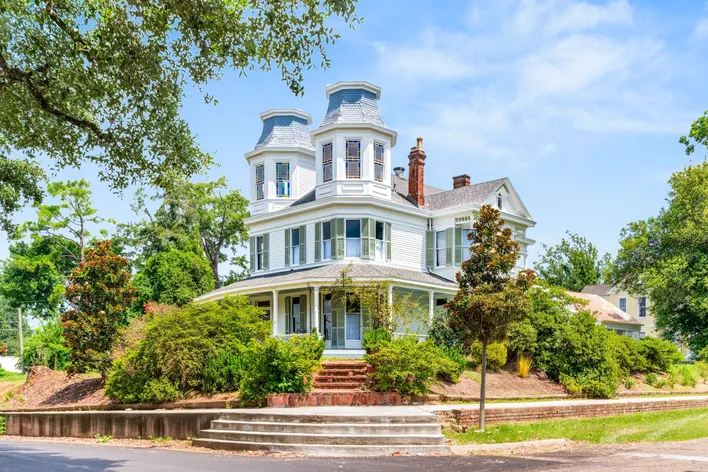The 30 Best Places to Live in Colorado: Complete Guide For Residents
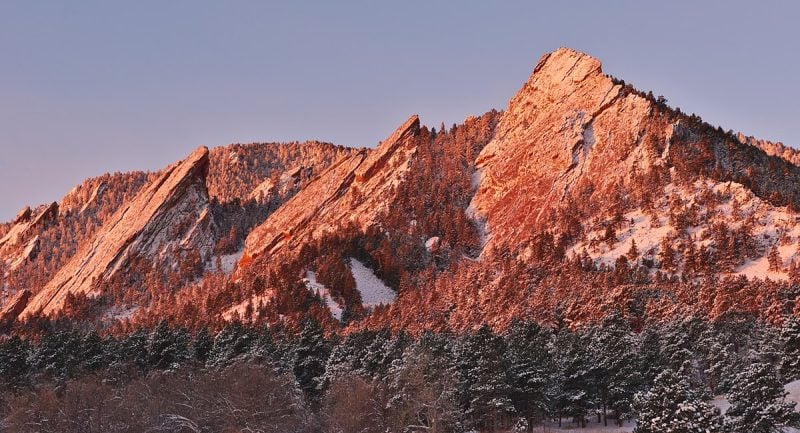
Colorado consistently ranks among the most desirable states for relocation, combining natural beauty with diverse urban and suburban communities that cater to different lifestyles and preferences.
The state offers everything from bustling metropolitan areas to charming mountain towns, each providing unique advantages for residents seeking quality of life improvements.
This comprehensive evaluation examines the top 30 places to live in Colorado, analyzing factors such as cost of living, employment opportunities, educational systems, and recreational amenities to help prospective residents make informed decisions.
The analysis covers major cities like Denver and Colorado Springs alongside smaller communities such as Fountain and Erie, providing insights into both urban centers and suburban alternatives.
Additionally, the assessment considers regional variations across Colorado’s diverse geography, from Front Range communities to Western Slope destinations.
Here are the 30 best places to live in Colorado:
30. Fountain
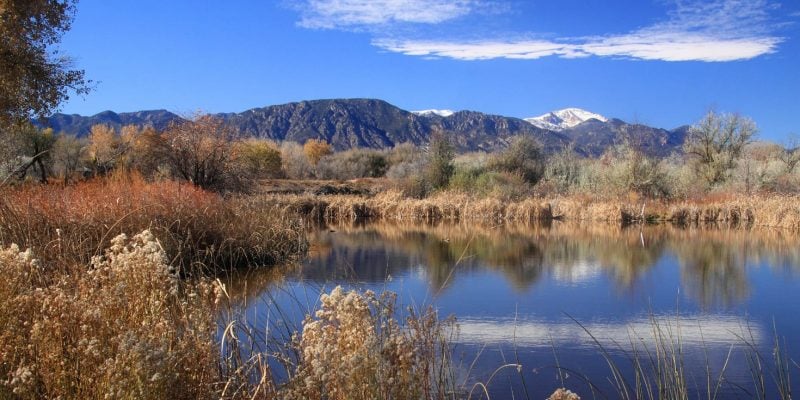
Fountain ranks 32nd among Colorado’s best places to live with a population of 21,697. The city earned an A+ livability rating from BestPlaces.
The typical household in Fountain earns $68,194 annually, slightly above the national median of $67,500. Only 32.8% of households earn less than $50,000 per year, compared to 39% nationally.
Housing costs remain affordable compared to Colorado’s average. Home prices in Fountain are less expensive than the state average of $430,259.
Fountain ranks 4th out of 71 for most diverse suburbs in Colorado. The poverty rate sits at 7.1%, which is 49% lower than the national average.
Fortune Well recently included Fountain on its inaugural “Fortune 25 Best Places to Live for Families” list, highlighting its appeal for multigenerational households.
29. Erie
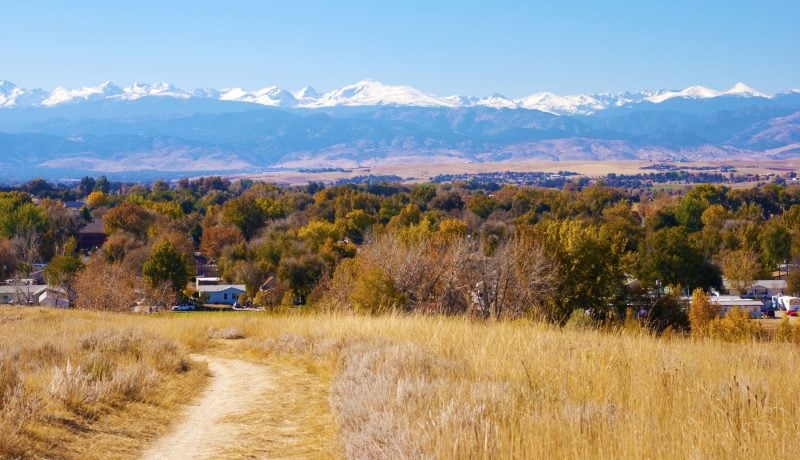
Erie sits in both Boulder and Weld counties, offering residents a strategic location just 25 minutes north of Denver. This rapidly growing town maintains a population of approximately 27,000 people.
The community enjoys an exceptional median household income of $124,480, significantly higher than the national average. The poverty rate remains low at 4.7%, creating a financially stable environment.
Erie’s school district provides high-quality education for families. The town experiences around 300 days of sunshine annually, making it attractive for outdoor enthusiasts.
Home prices exceed Colorado’s state average of $430,259, reflecting the area’s desirability. Most residents own their homes and enjoy a suburban atmosphere with rural characteristics.
The town features numerous parks, recreational facilities, and outdoor activities. Crime rates remain minimal, contributing to Erie’s reputation as a family-friendly destination with conservative-leaning residents.
28. Louisville
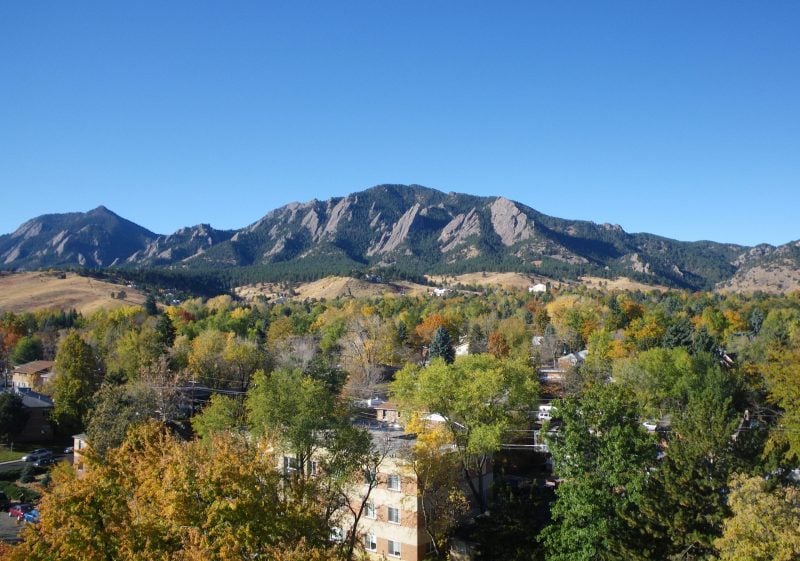
Louisville stands out as one of Colorado’s premier suburban communities. Located in Boulder County, this city of approximately 20,800 residents consistently ranks among the state’s top places to live.
The city earned recognition from Money Magazine, ranking as the second-best place to live in the country in 2014. Family Circle also named it one of the top 10 Best Towns for Families in 2012.
Louisville offers a dense suburban atmosphere where most residents own their homes. The community features numerous restaurants, coffee shops, and parks throughout the area.
Residents enjoy access to 1,800 acres of open space and regular summer events with food trucks, beer gardens, and live music. The Rocky Mountains sit just 20 minutes away, while Boulder is accessible within 10 minutes.
The city maintains low crime rates and operates a stellar education system, contributing to its appeal for families.
27. Superior
Superior ranks among Colorado’s top suburban communities with a population of 13,136 residents. The town sits in Boulder County and offers easy access to both Denver and Boulder metro areas.
The community maintains a sparse suburban atmosphere where most residents own their homes. Superior features numerous restaurants, coffee shops, and parks that serve the local population.
Households in Superior earn a median income of $126,600 annually, significantly above the national average. The poverty rate stands at just 4%, well below national levels.
Superior’s school system receives high ratings for both elementary and secondary education. The town has earned recognition as one of Colorado’s best places to live based on quality of life metrics.
Home prices in Superior exceed Colorado’s state average of $430,259. The community continues growing with new development plans transforming the area into a modern suburb.
26. Englewood

Englewood offers residents proximity to Denver while maintaining its own distinct community character. The city provides easy access to urban amenities without the higher costs of living directly in the metro area.
Home values vary significantly across different neighborhoods within Englewood. The market reflects strong demand in certain areas, indicating desirable living conditions for many residents.
Centennial Park serves as a major recreational asset for outdoor enthusiasts. The location provides various activities and green space for families and individuals seeking outdoor recreation.
The community hosts regular events that bring residents together throughout the year. These gatherings help foster neighborhood connections and local engagement.
Englewood’s strategic location offers convenient commuting options to Denver and surrounding areas. This accessibility makes it attractive for professionals working in the broader metropolitan region while preferring smaller city living.
25. Broomfield
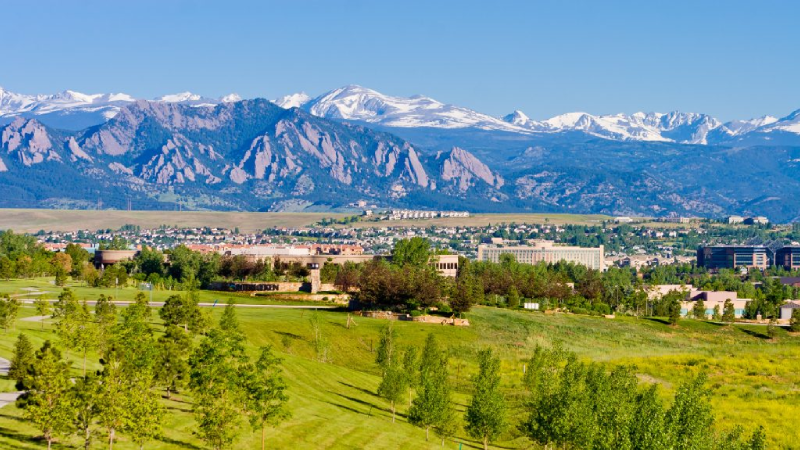
Broomfield ranks as the sixth best place to live in America according to Livability’s 2024 rankings. The city sits strategically between Denver and Boulder, offering residents easy access to both metropolitan areas.
The community provides a dense suburban atmosphere where most residents own their homes. Broomfield maintains a population of 75,110 people within its boundaries.
Outdoor enthusiasts appreciate the extensive trail systems and open spaces throughout the city. The Paul Derda Recreation Center serves as a hub for recreational activities.
The local economy thrives as a technology hub with a strong job market. Residents enjoy numerous restaurants, coffee shops, and parks within the community.
Home prices in Broomfield exceed Colorado’s state average of $430,259. The Rocky Mountains provide a scenic backdrop for daily life in this thriving suburb.
24. Steamboat Springs
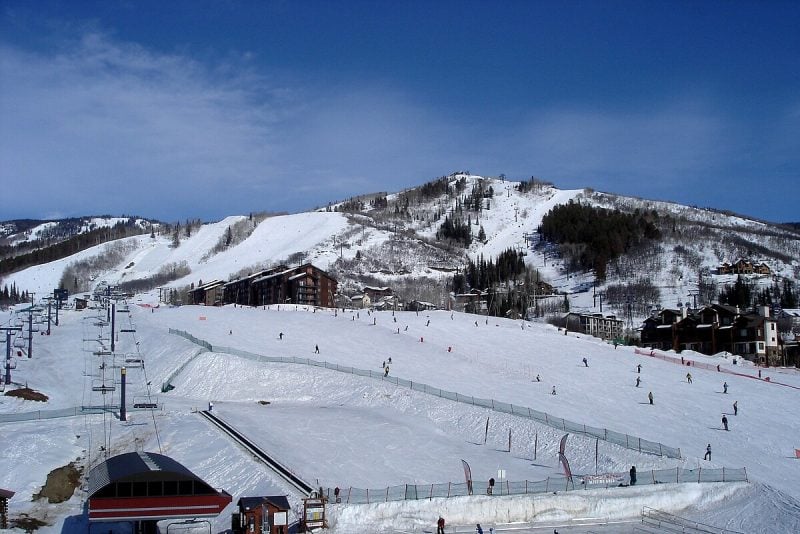
Steamboat Springs sits in the Rocky Mountains with a population of approximately 13,341 residents. The town offers an urban-suburban mix that attracts outdoor enthusiasts and families alike.
Most residents own their homes in this Routt County community. The area features numerous restaurants, coffee shops, and parks that contribute to its livable atmosphere.
The cost of living runs 38% higher than the national average. Median home prices reach around $1,188,899, reflecting the desirable mountain location and amenities.
Steamboat Springs began as a ranching community before developing into a tourist destination. Year-round residents appreciate the distinct four seasons and mountain lifestyle.
The town ranks among the best places to live in Colorado according to multiple sources. Its combination of outdoor recreation opportunities and community amenities makes it particularly appealing to those seeking mountain living.
23. Grand Junction
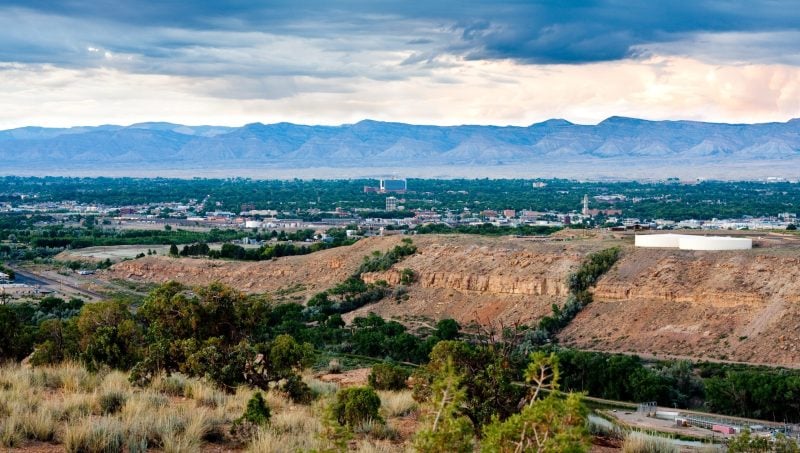
Grand Junction ranks as one of Colorado’s most desirable places to live according to USA Today’s analysis of 22 cities statewide. The city offers residents a dense suburban feel with a population of 67,027 in Mesa County.
Housing costs remain below the state average of $430,259, making it an affordable option compared to other Colorado cities. Most residents own their homes in this family-friendly community.
The city provides abundant outdoor recreation opportunities through Colorado National Monument, Grand Mesa National Forest, and James M Robb Colorado River State Park. Downtown Grand Junction features historic charm with numerous coffee shops and parks.
Top neighborhoods include Redlands for scenic views, Orchard Mesa for affordable family housing, and Northwest Grand Junction for newer developments. The area attracts families and young professionals seeking outdoor adventures combined with urban amenities.
22. Durango
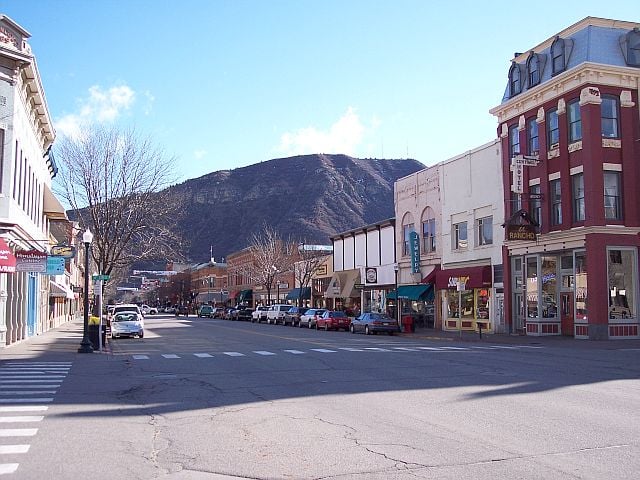
Durango sits at the foot of the San Juan Mountains in Southwest Colorado. This scenic mountain town combines outdoor adventures with a close-knit community atmosphere.
The downtown area features vibrant restaurants and shops. Residents enjoy easy access to hiking trails, skiing, and fishing opportunities throughout the region.
Durango offers diverse neighborhoods to match different lifestyles. Options range from peaceful areas surrounded by nature to more active downtown locations.
The city provides cultural attractions and historical sites alongside its natural beauty. Housing quality varies significantly between different neighborhoods throughout the area.
Durango ranks among Colorado’s appealing places to live for those seeking mountain town living. The community balances outdoor recreation with urban amenities in a smaller city setting.
21. Aspen
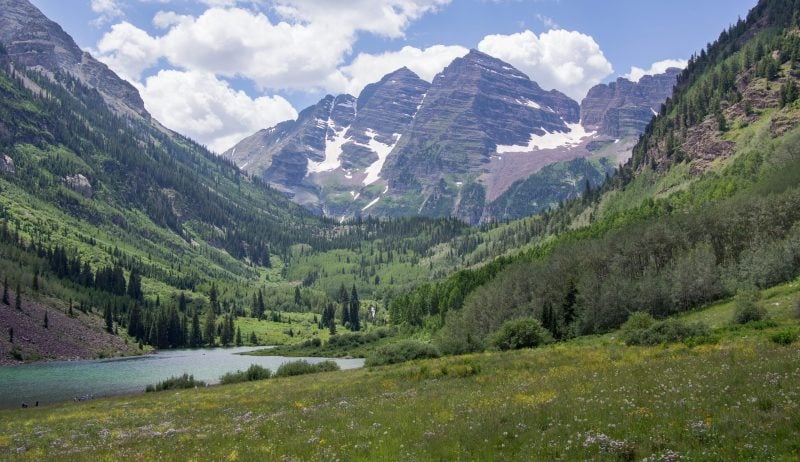
Aspen stands as one of Colorado’s most prestigious mountain destinations. This small town in Pitkin County has a population of 6,862 residents.
The median home price reaches $2,994,800, making it significantly more expensive than Colorado’s state average of $430,259. Home appreciation has increased 15.7% in the last 12 months.
Residents enjoy an urban-suburban mix with abundant outdoor recreation opportunities. The town features numerous bars, restaurants, coffee shops, and parks throughout the area.
Aspen offers world-class skiing and vibrant cultural events year-round. The natural scenery provides a backdrop for outdoor enthusiasts and nature lovers.
Most residents own their homes in this exclusive mountain community. The town attracts those seeking a luxurious lifestyle combined with active mountain living.
20. Vail
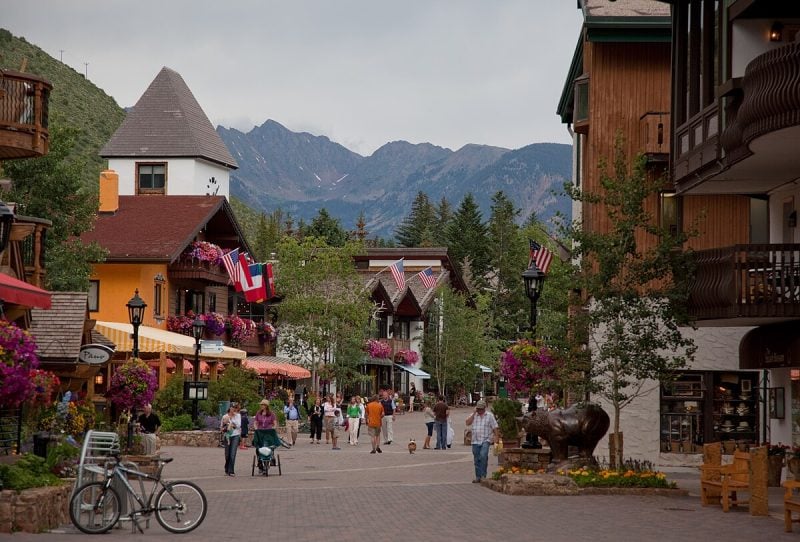
Vail ranks as one of Colorado’s premier mountain towns, nestled at the base of the Rocky Mountains in Eagle County. The town houses 4,729 residents and offers an urban feel despite its mountain location.
Most residents own their homes in this resort community. The area features numerous bars, restaurants, coffee shops, and parks throughout the main street district.
Vail provides year-round outdoor activities including world-class skiing and snowboarding in winter. Summer months offer hiking, biking, fishing, and camping opportunities in the surrounding national forest.
The town has earned recognition as the 42nd best place to retire in the United States. It also ranks 96th globally for best places to live.
Housing costs exceed Colorado’s state average significantly, with home prices well above $430,259. The higher cost reflects the area’s desirability and mountain location.
19. Edwards
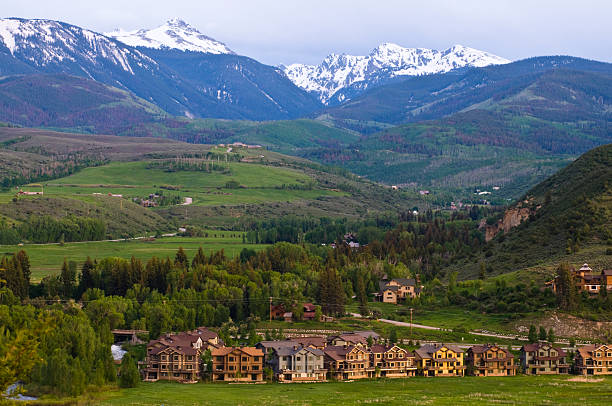
Edwards is a small mountain community in Eagle County with a population of 10,415. The town sits in Colorado’s Rocky Mountains and offers residents a dense suburban atmosphere.
Most residents own their homes in Edwards. The community attracts many young professionals who appreciate the mountain lifestyle and proximity to outdoor recreation.
Edwards receives an overall ranking of 8 out of 10 from BestPlaces.net. This score reflects factors including employment rates, cost of living, and quality of life measures.
The public schools in Edwards perform above average compared to state standards. Residents tend to hold moderate political views across the community.
Home prices in Edwards exceed Colorado’s state average of $430,259. The higher housing costs reflect the desirable mountain location and strong local market demand.
The town provides access to year-round outdoor activities typical of Rocky Mountain communities. Edwards combines small-town living with recreational opportunities that draw residents seeking an active lifestyle.
18. Greeley

Greeley ranks as the 16th best place to live in Colorado according to BestPlaces. The city offers residents a dense suburban feel with a population of 109,421.
Located in northern Colorado, Greeley sits about 50 miles northeast of Denver. The city provides easy access to both Denver and Fort Collins, with I-25 just 15 miles to the west.
Home prices in Greeley remain below Colorado’s state average of $430,259. This makes the city an attractive option for families and young professionals seeking affordable housing.
The community features numerous parks and recreational amenities. Public schools in Greeley perform above average, making it appealing to families with children.
Greeley’s economy remains strong with diverse job opportunities. The city maintains its agricultural roots while expanding into other industries, providing stability for residents.
17. Golden
Golden sits at the foothills of the Rocky Mountains, offering residents stunning mountain views and outdoor recreation opportunities. The city serves as home to the Colorado School of Mines, bringing educational prestige to the area.
Home prices in Golden exceed Colorado’s state average of $430,259. The premium reflects strong market demand for this desirable location.
The city ranks highly for diversity and education according to BestPlaces rankings. Students have access to quality educational institutions beyond the renowned engineering school.
Golden’s proximity to Denver provides urban amenities while maintaining a small-town atmosphere. Residents enjoy easy access to hiking trails, mountain biking, and winter sports.
The historic downtown area features local breweries and shops. Mountain recreation combined with educational opportunities makes Golden attractive to professionals and families seeking an active lifestyle.
16. Loveland
Loveland consistently ranks among Colorado’s best places to live. The city has earned recognition for its high quality of life and strong community appeal.
Known as the “Sweetheart City,” Loveland offers diverse neighborhoods that cater to different lifestyles. West Loveland features newer developments with mountain views and easy access to outdoor recreation areas.
Downtown Loveland showcases a historic area with a vibrant arts scene and walkable streets. The newly refurbished downtown contributes to the city’s growing popularity.
The city maintains a low crime rate and above-average education scores. Public schools in Loveland perform well, making it attractive for families with children.
Loveland provides abundant outdoor recreation opportunities. Residents can enjoy skiing at nearby Arapahoe Basin and hiking at Devil’s Backbone Open Space.
The city has a population of 77,350 and offers a dense suburban feel. Most residents own their homes, and the area attracts both families and young professionals.
15. Littleton
Littleton sits 20 minutes south of Denver, offering suburban tranquility with urban access. The city combines Gold Rush heritage with modern amenities and recreational opportunities.
Home prices exceed Colorado’s state average of $430,259, reflecting the area’s desirability. Old Littleton features historic charm with original houses dating to the early 1900s.
The community provides excellent educational institutions and abundant outdoor recreation. Miles of scenic greenery surround residential areas, creating a peaceful environment.
Littleton ranks favorably in cost of living, weather, and housing quality metrics. The location allows residents to enjoy both mountain recreation and Denver’s cultural attractions.
The city maintains a relaxed atmosphere despite its proximity to Colorado’s largest metropolitan area. Families appreciate the balance of small-town feel with big-city conveniences.
14. Highlands Ranch
Highlands Ranch stands as a master-planned community in Douglas County, located just 30 minutes south of Denver. The suburb houses 101,437 residents and ranks among Colorado’s most desirable places to live.
The community offers diverse housing options ranging from townhomes and condos to single-family homes and upscale estates. Over 30 years of planned development has created established neighborhoods with mature trees alongside newer builds.
Residents enjoy access to numerous parks, coffee shops, and recreational facilities including Bluffs Regional Park. The area provides easy access to outdoor activities while maintaining suburban convenience.
Highlands Ranch boasts top-rated schools and attracts families, young professionals, and retirees. The median household income reaches $124,841 with an unemployment rate of 3.4%.
Home prices exceed Colorado’s state average of $430,259, reflecting the area’s desirability and affluent character.
13. Thornton
Thornton sits just 10 miles north of Denver, offering residents suburban living with easy city access. This Adams County community houses 142,878 people in a dense suburban setting.
The city consistently ranks in Colorado’s top five places to live. Home prices remain below the state average of $430,259, making it an affordable option near Denver.
Most residents own their homes and enjoy access to numerous parks throughout the city. The public school system performs above average, attracting families with children.
Young professionals and families make up much of the population. Political views tend to be moderate across the community.
Crime rates stay relatively low, contributing to Thornton’s reputation as a safe place to raise children. The mix of affordability, safety, and proximity to Denver makes it attractive to many Colorado residents.
12. Arvada
Arvada sits along the foothills of the Rocky Mountains, offering residents stunning mountain views and easy access to outdoor recreation. The city combines suburban comfort with small-town charm.
Olde Town Arvada serves as the historic heart of the community. This walkable district features local shops, restaurants, and cultural venues that create a vibrant downtown atmosphere.
The West Woods neighborhood attracts those seeking upscale living. This area is known for its golf course and beautiful homes with mountain views.
Arvada ranks 30th out of 71 for best suburbs for young professionals in Colorado. Home prices exceed the state average of $430,259, reflecting the area’s desirability.
The city provides ample outdoor recreation opportunities through its trail systems and parks. Residents enjoy hiking, biking, and other activities in the scenic Front Range setting.
Arvada’s location offers convenient access to Denver while maintaining a distinct community identity.
11. Westminster
Westminster sits strategically between Denver and Boulder along the Highway 36 corridor. The city offers easy access to both metropolitan areas within a 20-minute drive.
This vibrant community ranks as Colorado’s ninth-largest city with approximately 30 neighborhoods. Westminster provides diverse living options from bustling retail districts to peaceful residential areas near Standley Lake.
Housing costs in Westminster remain below the state average of $430,259. The city attracts residents seeking suburban living without the premium prices of central Denver.
Westminster Station offers transit-oriented living with direct rail access to Denver via the B Line. Legacy Ridge features upscale homes surrounding a golf course, while Bradburn Village provides walkable urban planning with mixed housing types.
The city earned a 7.2 out of 10 rating from BestPlaces.net based on lifestyle, education, and healthcare quality. Westminster appeals to families and professionals wanting suburban comfort with urban accessibility.
10. Castle Rock
Castle Rock sits 30 miles south of Denver, offering residents a perfect blend of small-town charm and metropolitan accessibility. The city houses approximately 76,000 residents in Douglas County.
The community earned recognition as one of the top places to live in Colorado multiple times. Money Magazine featured Castle Rock on their Best Places to Live list in 2011, 2012, 2014, and 2019.
Natural beauty defines much of Castle Rock’s appeal. The town provides 400 acres of state parks, canyons, and scenic landscapes that attract outdoor enthusiasts.
Housing costs exceed Colorado’s state average of $430,259, reflecting the area’s desirability. Most residents own their homes in this sparse suburban environment.
Castle Rock offers abundant parks and recreational opportunities. The family-friendly atmosphere makes it particularly attractive to households with children seeking quality amenities and community connections.
9. Pueblo
Pueblo sits 40 minutes southeast of Colorado Springs, earning recognition as Colorado’s “Steel City.” The city houses approximately 112,000 residents and maintains a diverse economy beyond its industrial roots.
The area offers significantly lower housing costs compared to other Colorado cities. Median home prices hover around $276,000, making it one of the state’s more affordable markets.
Pueblo receives less snowfall than most Colorado locations, creating year-round outdoor recreation opportunities. Lake Pueblo State Park serves as a major mountain biking destination, attracting riders from across the region during winter months.
The city features several desirable neighborhoods including Aberdeen’s quiet residential streets and Belmont’s family-friendly atmosphere. University Park attracts students and faculty from Colorado State University Pueblo.
Pueblo’s location between Denver and Albuquerque provides convenient access to major southwestern cities. Residents enjoy a vibrant arts scene, sunny weather, and lower cost of living compared to Colorado’s mountain communities.
8. Lakewood
Lakewood, Colorado, is a vibrant suburb located just west of Denver, offering a perfect blend of urban convenience and outdoor beauty.
With stunning views of the Rocky Mountains, Lakewood is known for its access to nature, including more than 100 parks and miles of hiking and biking trails.
The city boasts a diverse population, a strong sense of community, and a thriving arts and culture scene, anchored by the Lakewood Cultural Center.
Residents enjoy easy access to downtown Denver via light rail, along with excellent schools, shopping, and dining. Lakewood’s neighborhoods range from quiet, tree-lined streets to modern developments, appealing to families, professionals, and retirees alike.
Whether you’re looking for outdoor adventure, top-rated schools, or a relaxed lifestyle near the city, Lakewood offers a high quality of life in a scenic and welcoming setting.
7. Longmont
Longmont sits at the foothills of the Rocky Mountains in Boulder County. The city combines urban amenities with easy access to outdoor recreation.
Old Town serves as the historic heart of Longmont. This walkable district features charming homes, restaurants, galleries, and boutique shops. The area maintains its historic character while offering modern conveniences.
Prospect New Town attracts residents with its new urbanist design and unique architecture. The community emphasizes walkability and connectivity between neighborhoods.
Family-friendly areas like Southmoor Park provide good schools and parks. Renaissance offers a master-planned community with modern amenities for residents seeking newer developments.
Home prices in Longmont exceed Colorado’s state average of $430,259. The city has earned recognition for its quality of life and low crime rates.
Longmont provides numerous outdoor recreational opportunities due to its mountain location. The city maintains an excellent education system and offers various amenities that appeal to different lifestyles.
6. Centennial
Centennial stands out as one of Colorado’s premier residential destinations. The city earned the #1 ranking for Best Place to Live in Colorado by U.S. News & World Report for 2025-2026.
This relatively new city in the Denver metropolitan area boasts a population of 115,275. The median household income reaches $112,599, while median home prices average $473,297.
Centennial ranks 6th out of 71 for best suburbs in Colorado. The city also places 7th out of 149 for areas with top public schools statewide.
Safety and quality of life define Centennial’s appeal. An average of 1,152 people relocate to the city annually, drawn by its strong local economy and community amenities.
The city enjoys over 300 days of sunshine yearly and sits at the base of the Rocky Mountain Front Range. This location provides convenient access to both urban amenities and outdoor recreation.
5. Aurora
Aurora ranks as Colorado’s third-largest city and earned recognition on Livability magazine’s Top 100 Best Places to Live in 2025. The city sits east of Denver, offering residents suburban living with urban amenities.
The community features diverse neighborhoods catering to different lifestyles. Seven Hills and Tallyn’s Reach consistently rank among the top residential areas based on quality metrics.
Southshore provides lakeside living with newer construction and strong schools. Stapleton offers modern planned community features with walkable streets and abundant parks.
Aurora residents benefit from proximity to both Denver’s downtown core and the Rocky Mountains. The city maintains a reputation for safety and quality educational institutions.
The area attracts families, young professionals, and retirees seeking variety in housing options and recreational opportunities. Multiple neighborhoods provide different price points and community atmospheres throughout the city.
4. Denver
Denver ranks as Colorado’s capital and largest city. The mile-high metropolis offers residents a blend of urban amenities and outdoor recreation access.
The city features diverse neighborhoods suited for different lifestyles. Downtown Denver provides walkable living with cultural attractions like the Denver Art Museum and LoDo Historic District.
Housing options range from historic homes to modern apartments. Many neighborhoods offer proximity to public transit and bike-friendly streets.
Denver’s job market spans technology, healthcare, and energy sectors. The city attracts young professionals and families seeking career opportunities.
Residents enjoy easy access to skiing, hiking, and mountain recreation. The Rocky Mountains sit less than an hour from downtown.
The city experiences over 300 sunny days annually. Winters bring snow but remain relatively mild compared to mountain communities.
Denver’s food scene includes craft breweries, farm-to-table restaurants, and diverse cuisine options. The city hosts numerous festivals and cultural events throughout the year.
3. Colorado Springs

Colorado Springs sits at the eastern foot of the Rocky Mountains, offering residents urban amenities alongside natural beauty. The city serves as Colorado’s second-largest municipality.
The area features dramatic mountain views with peaks reaching 10,000 to 14,000 feet. Natural attractions include Garden of the Gods and Pikes Peak, providing hiking and outdoor recreation opportunities.
Top neighborhoods include Cordera and Gleneagle for those seeking upscale living. Old Colorado City offers historic charm with Victorian architecture and local arts scene.
Residents enjoy a semiarid climate with relatively flat terrain transitioning to steep mountain slopes. The location provides outdoor activities like mountain biking and rock climbing.
The city offers modern resources and amenities without the traffic congestion of larger metropolitan areas. Colorado Springs combines mountain living with urban conveniences for diverse lifestyle preferences.
2. Fort Collins

Fort Collins sits at the foothills of the Rocky Mountains in northern Colorado. The city has a population of 169,705 and ranks as one of Colorado’s premier destinations.
The community offers a dense suburban feel where most residents own their homes. Fort Collins serves as both a thriving agricultural center and high-tech hub.
Colorado State University contributes to the city’s educated population and vibrant atmosphere. The presence of students creates energy while maintaining family-friendly appeal.
Fort Collins has earned recognition for its award-winning schools and excellent healthcare systems. The city consistently ranks among the top places to live nationally.
Outdoor enthusiasts find abundant recreational opportunities throughout the area. The city also boasts a flourishing craft beer scene with numerous local breweries.
Residents enjoy access to many restaurants, coffee shops, and parks. The combination of natural beauty, economic opportunities, and quality amenities makes Fort Collins highly desirable.
1. Boulder
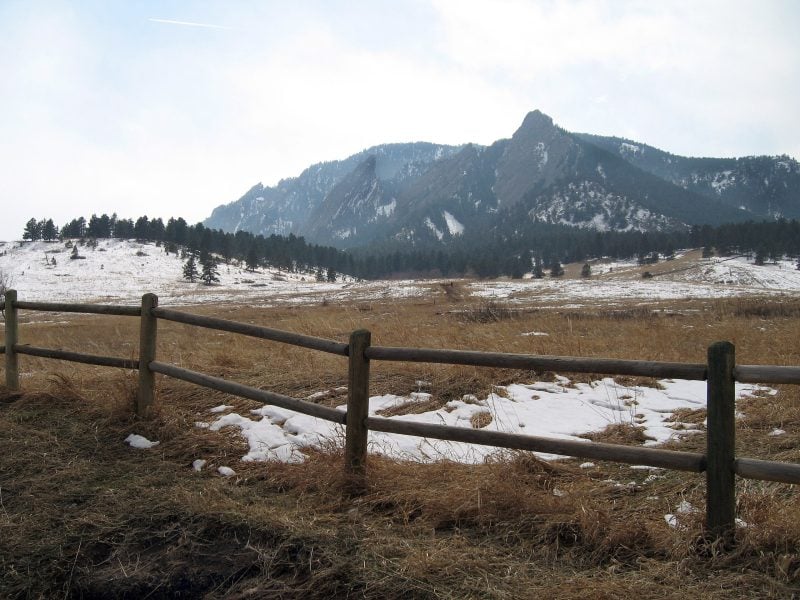
Boulder ranks as the 10th best place to live in the nation according to U.S. News & World Report’s 2024-2025 rankings. The city sits at the foothills of the Rocky Mountains, offering stunning natural surroundings and abundant outdoor recreation opportunities.
The area combines natural beauty with a thriving cultural scene and strong sense of community. Residents enjoy access to excellent schools and universities, contributing to Boulder’s reputation for quality education.
Boulder County provides diverse neighborhoods with mountain views and easy access to hiking, skiing, and other outdoor activities. The city attracts professionals and families seeking an active lifestyle in a vibrant mountain setting.
Housing costs remain higher than many Colorado cities, but residents cite the lifestyle benefits and natural amenities as worthwhile trade-offs. Boulder consistently appears on best places to live lists due to its unique blend of outdoor access, cultural offerings, and community atmosphere.
Factors That Make Colorado Cities Desirable
Colorado cities consistently rank among the nation’s most livable locations due to their balanced cost structure, strong educational systems, abundant outdoor activities, and comprehensive healthcare networks. These four elements work together to create communities that attract residents seeking both quality of life and practical amenities.
Cost of Living Considerations
Housing costs vary significantly across Colorado’s cities, with smaller mountain towns often commanding premium prices while mid-sized communities offer more affordable options. Denver metro area housing typically runs 15-20% above national averages, while cities like Colorado Springs and Fort Collins provide more moderate pricing.
Key Cost Factors:
- Housing: Median home prices range from $350,000 in smaller cities to $650,000+ in Boulder and Aspen
- Utilities: Energy costs remain competitive due to natural gas resources
- Transportation: Many cities offer public transit options reducing vehicle dependency
- Taxes: No state income tax on military retirement pay and moderate property tax rates
Employment opportunities in tech, aerospace, and energy sectors help offset higher living costs in many areas. Cities like Loveland and Greeley provide lower housing costs while maintaining access to major employment centers.
Quality of Education
Colorado’s education system features strong public school districts and renowned higher education institutions. The state ranks in the top 20 nationally for education quality with numerous districts earning excellent ratings.
Educational Highlights:
- K-12 Schools: Districts like Cherry Creek, Douglas County, and Boulder Valley rank among state leaders
- Higher Education: University of Colorado system, Colorado State University, and Colorado School of Mines
- School Choice: Open enrollment policies allow families flexibility in district selection
- Funding: Per-pupil spending varies by district but averages $9,500 statewide
Mountain communities like Steamboat Springs and Telluride maintain exceptional student-teacher ratios. Urban areas offer specialized programs including STEM academies and International Baccalaureate schools.
Outdoor Recreation Opportunities
Colorado’s geography provides year-round recreational access with 58 peaks exceeding 14,000 feet and over 40 ski resorts. Cities near national forests and state parks offer immediate access to hiking, skiing, fishing, and climbing.
Recreation Assets:
- Winter Sports: World-class skiing in Vail, Aspen, Breckenridge, and Winter Park
- Hiking/Biking: 3,000+ miles of trails including the Colorado Trail
- Water Activities: Rafting on the Arkansas River and boating on mountain reservoirs
- National Parks: Rocky Mountain National Park and Great Sand Dunes proximity
Front Range cities provide easy mountain access within 90 minutes. Towns like Durango and Grand Junction offer direct access to multiple outdoor recreation areas.
Healthcare Access and Facilities
Colorado cities benefit from major medical centers and specialized healthcare facilities. The state ranks 17th nationally for healthcare quality with strong preventive care metrics.
Healthcare Infrastructure:
- Major Systems: UCHealth, Presbyterian/St. Joseph, and Kaiser Permanente networks
- Specialization: National Jewish Health for respiratory care, Children’s Hospital Colorado
- Rural Access: Critical access hospitals serve smaller communities
- Mental Health: Above-average counseling and psychiatric services availability
Cities like Boulder and Fort Collins host medical research facilities. Even smaller communities maintain quality primary care access through regional healthcare networks and telemedicine services.
Regional Comparison of Colorado’s Living Environments
Colorado’s diverse geography creates distinct living environments from bustling metropolitan areas to secluded mountain communities. Each region offers unique advantages in terms of lifestyle, climate, and community characteristics that appeal to different resident preferences.
Urban vs. Suburban Lifestyles
Denver Metro Area serves as Colorado’s primary urban center, providing extensive public transportation, cultural venues, and employment opportunities. The city features walkable neighborhoods like LoDo and RiNo with high-rise living and proximity to restaurants, entertainment, and sports venues.
Boulder combines urban amenities with outdoor access. The city maintains a compact downtown core while preserving mountain views and hiking trails within city limits.
Colorado Springs represents suburban living with lower housing costs than Denver. Residents enjoy single-family homes, planned communities, and access to military installations that provide stable employment.
Suburban areas like Lakewood, Arvada, and Westminster offer family-oriented environments. These communities feature larger lots, quality school districts, and easier parking compared to urban cores.
Key Differences:
- Urban areas: Higher walkability, more dining options, increased housing costs
- Suburban areas: Larger living spaces, family amenities, car-dependent transportation
Mountain Town Advantages
Aspen and Vail provide world-class skiing and luxury amenities. These resort communities offer direct slope access, high-end shopping, and international dining options during peak seasons.
Breckenridge and Steamboat Springs deliver authentic mountain experiences with more affordable housing options. Residents enjoy year-round outdoor activities including skiing, hiking, and mountain biking.
Durango and Grand Junction represent gateway communities to national parks. These towns combine mountain proximity with reasonable living costs and diverse economies beyond tourism.
Mountain communities typically feature:
- Seasonal employment opportunities in hospitality and recreation
- Higher elevation living between 6,000-10,000 feet
- Limited shopping requiring trips to larger cities
- Strong outdoor recreation culture and community events
Housing costs vary significantly, with resort towns commanding premium prices while smaller mountain communities offer more affordable options.
Climate Variations Across the State
Eastern Plains experience traditional continental climate with hot summers and cold winters. Cities like Fort Collins and Greeley see temperature ranges from 90°F in summer to below freezing in winter with minimal precipitation.
Front Range communities enjoy 300+ days of sunshine annually. Denver and Boulder receive moderate snowfall with quick melting due to elevation and sun exposure.
Mountain Regions face significant temperature variations by elevation. Aspen and Breckenridge experience long winters with heavy snowfall lasting from November through April.
Western Slope areas like Grand Junction feature desert climate with hot, dry summers and mild winters. This region receives less precipitation than mountain areas.
Climate Considerations:
- Altitude effects: Higher elevations mean cooler temperatures and increased UV exposure
- Snow patterns: Mountain areas receive 200+ inches annually while plains get 40-60 inches
- Wind conditions: Chinook winds create rapid temperature changes along the Front Range



